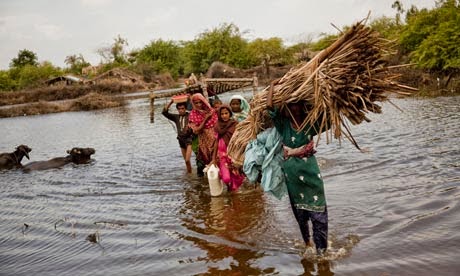Investment in climate change adaptation tonic to SADC’s transformation
Lazarus Sauti
British naturalist, Charles Darwin, once said it is not the strongest
species that survive, or the most intelligent, but the ones who are most
responsive to change.
Borrowing from Darwin’s quote, the United Nations Environment Programme
– the voice for the environment in the United Nations system – believes
countries that are most responsive to investment in climate change adaptation can
stimulate and transform their economies through more efficient use of natural
capital, job creation and increased household incomes.
“Investment in climate change adaptation can help ensure that the
impacts of climate change - including a projected 20 to 50 per cent decline in
water availability – do not reverse decades of development progress in Africa,”
asserts a new report “Keeping Track of
Adaptation Actions in Africa – Targeted Fiscal Stimulus Actions Making a
Difference”, recently released by the United Nations Environment
Programme.
The first graphical report that presents practical examples of
successful low-cost adaptation solutions from around sub-Saharan Africa in one
concise handbook takes in examples of successful adaptation projects that have
provided the impetus for large-scale government investments and policy action.
“With 94 per cent of agriculture dependent on rainfall, the future
impacts of climate change – including increased droughts, flooding, and
seal-level rise – may reduce crop yields in some parts of Africa by 15 to 20
per cent,” says United Nations Under-Secretary-General and UNEP Executive
Director, Achim Steiner.
He goes on to say: “Such a scenario, if unaddressed, could have grave
implications for Africa’s most vulnerable states. Using projects implemented in
various countries in sub-Saharan Africa, the “Keeping Track of Adaptation Actions in Africa” report clearly
demonstrates how investment in adaptation actions can provide, not just
low-cost solutions to climate change challenges, but can actually stimulate
local economies through more efficient use of natural capital, job creation and
increased household incomes.”
As the Southern African Development Community is at the mess of climate
change, regional leaders must, without fail, invest in climate change adaptation
as well as integrate adaptation strategies in national and regional development
policies.
“By investing and integrating climate change adaptation strategies in
national and regional development policies, governments can provide
transitional pathways to green growth and protect and improve the livelihoods
of hundreds of millions of Africans,” Steiner concurs.
For this to work, governments and key stakeholders especially in the
SADC region must close climate adaptation gaps first so as to improve the health
and functioning of ecosystems, build community capacity to sustainably manage
eco-systems, improve agricultural productivity, and innovatively store water.
Sadly, the most
recently Adaptation Gap study published by the United Nations Environment
Programme stated that Africa lags behind as far as adaptation projects to
support vulnerable groups are concerned. SADC countries are no exception as
most governments in the region have not done enough to close the adaptation
gap. In fact, they still think climate change is a western problem.
Moreover, this lag must
be blamed on SADC’s low capacity to develop and invest in mitigation as well as
adaptation facilities. For instance, the regional bloc SADC recently admitted that
it is ill-prepared to deal with natural disasters.
SADC director for
Infrastructure and Services, Remigious Makumbe, admitted that member states
were not prepared for earthquake early detection and disaster mitigation, and
this seriously shows that the region is in dire need of capacity building of a
regional institution responsible for mitigation and adaptation.
Ronald Chimunda, an agricultural research technician, says SADC leaders
should invest in research to effectively close climate change adaptation gaps
as well as supporting vulnerable groups. He believes leaders and other players
in the environment sector must research and acknowledge climate change and try
to use research findings to solve the problem.
“Research is vital if the region wants to invest in climate change
adaptation strategies and effectively sustain its environments. This means SADC
member state, through their leaders, must show more commitment to research as
the region needs an effective climate change adaptation policy. The policy
should also be in sync with other protocols that protect the environment and
propagate socio-economic transformation,” he says.
To show that they care
for this generation and others to come, says Chimunda, regional leaders and
other stakeholders must also invest in programmes that effectively sustain and
ensure continuous environmental management. This means they should rethink and invest
in climate change adaptation strategies and start spreading investment in rural
and deserted regions so as to reduce climate induced security risk and
migration.


Comments
Post a Comment